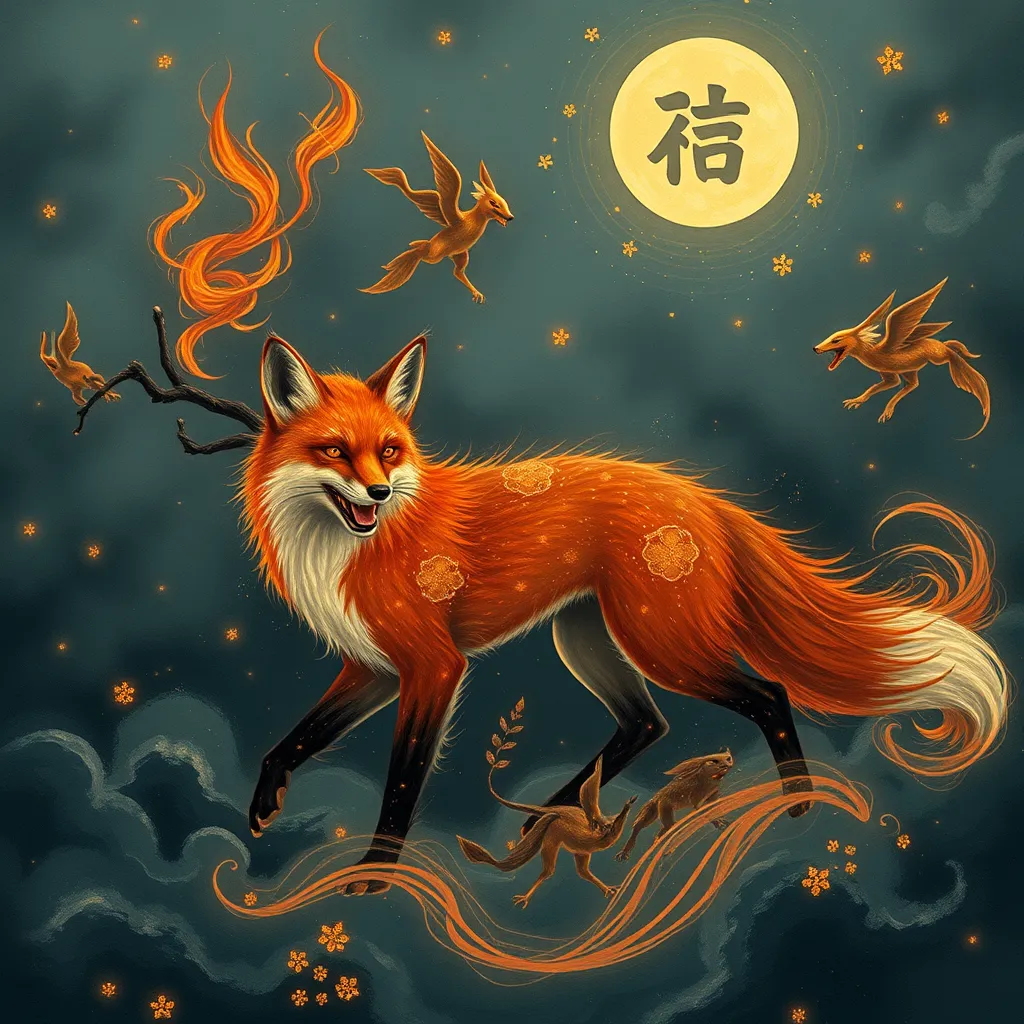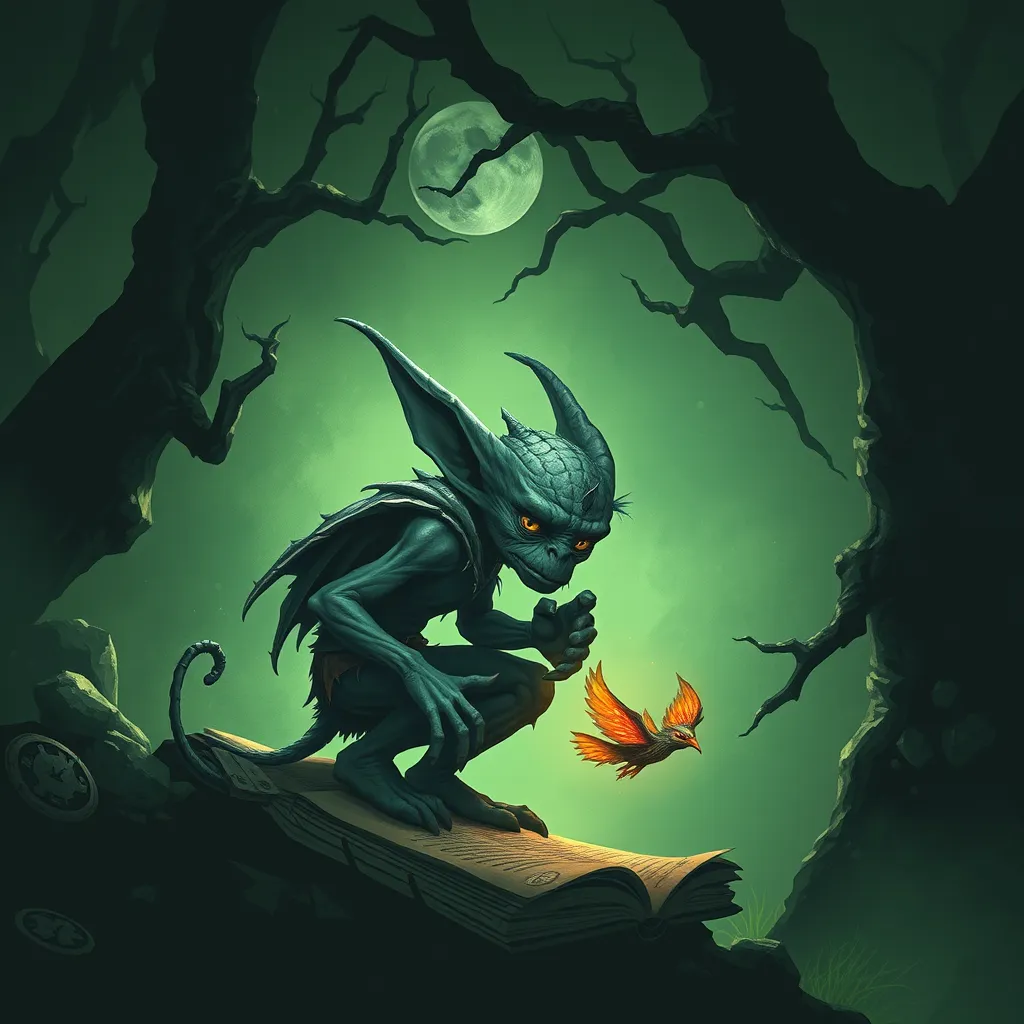The Fox Spirit in East Asian Folklore: Exploring the Kitsune’s Influence on Chinese and Vietnamese Mythology
I. Introduction
East Asian folklore is rich with diverse mythical creatures, among which the fox spirit holds a prominent place. The fox, often depicted as a cunning and mystical being, serves as a bridge between the natural and supernatural worlds in Chinese, Japanese, and Vietnamese cultures. The Kitsune, in particular, occupies a central role in Japanese mythology, where it is revered as a deity and feared as a trickster.
This article aims to explore the profound influence of the Kitsune on Chinese and Vietnamese mythology, illustrating how the fox spirit has been integrated into various cultural narratives and how its representation has evolved over time.
II. Historical Roots of the Fox Spirit in East Asia
The origins of fox spirit myths can be traced back to ancient East Asian cultures, where the fox was both revered and feared. These myths have roots in agricultural societies that viewed the fox as a symbol of cunning and trickery, often associated with the harvest and fertility.
- Ancient Origins: In ancient China, the fox was often seen as a messenger between humans and the spirit world, leading to the development of various myths surrounding its nature.
- Cultural Exchange: The proximity of China, Japan, and Vietnam facilitated a rich exchange of cultural ideas, enabling the fox spirit’s mythos to adapt and evolve as it moved across borders.
- Evolution of Legends: Over centuries, the portrayal of the fox spirit changed, reflecting societal values and beliefs in each region.
III. The Kitsune: Characteristics and Symbolism in Japanese Folklore
The Kitsune is a highly revered figure in Japanese mythology, often depicted with both benevolent and malevolent characteristics. This duality has led to a complex representation of the fox spirit within Japanese culture.
- Description: Traditionally, the Kitsune is portrayed as a fox with the ability to shapeshift into a beautiful woman. This ability often serves as a metaphor for mystery and allure.
- Benevolent vs. Malevolent: While some Kitsune are viewed as protectors and bringers of good fortune, others are seen as tricksters who deceive and manipulate humans for their own gain.
- Spiritual Significance: In Shinto, the Kitsune is associated with Inari, the deity of rice, agriculture, and prosperity, symbolizing fertility and abundance.
IV. The Fox Spirit in Chinese Mythology
In Chinese folklore, the fox spirit is commonly referred to as Huli Jing (狐狸精), a term that translates to “fox spirit.” The Huli Jing has its own unique attributes and stories that distinguish it from its Japanese counterpart.
- Attributes: The Huli Jing is often depicted as a seductive woman with magical abilities, capable of transforming into a beautiful human form to lure men.
- Legends: Numerous tales feature the Huli Jing, often highlighting themes of love, betrayal, and the consequences of desire. One famous story involves a Huli Jing who falls in love with a human, leading to tragic outcomes.
- Cultural Significance: In Chinese society, the fox spirit embodies the duality of attraction and danger, often serving as a warning against the pitfalls of lust and infidelity.
V. The Fox Spirit in Vietnamese Folklore
In Vietnam, the fox spirit is known as Mèo or Quái, and it holds a distinct place in the country’s cultural narratives. These stories often emphasize the moral lessons associated with the fox spirit.
- Overview: The Vietnamese fox spirit is often depicted as a trickster but also as a protective figure. It plays a dual role similar to its counterparts in China and Japan.
- Key Myths: Vietnamese folklore includes tales where the fox spirit assists humans in times of need or, conversely, leads them astray, reflecting the complexity of its character.
- Interplay with Values: The fox spirit in Vietnam often symbolizes cleverness and adaptability, qualities valued in Vietnamese culture, representing the ability to navigate life’s challenges.
VI. Comparative Analysis of the Kitsune, Huli Jing, and Vietnamese Fox Spirits
While the Kitsune, Huli Jing, and Vietnamese fox spirits share similarities, they also exhibit distinct characteristics shaped by their cultural contexts.
- Similarities: All three fox spirits possess shapeshifting abilities and are often associated with themes of love, deception, and duality.
- Differences: The portrayal of the fox spirit varies significantly; the Kitsune has a more pronounced spiritual role in Japanese culture, while the Huli Jing embodies a cautionary tale in Chinese folklore. Vietnamese depictions often emphasize cleverness and survival.
- Cultural Context: The different societal values and historical experiences in China, Japan, and Vietnam have influenced how each culture interprets the fox spirit’s role and significance.
VII. Modern Interpretations and Popular Culture
In recent years, there has been a resurgence of interest in fox spirit mythology within modern media. This revival reflects a broader trend of exploring traditional folklore in contemporary contexts.
- Media Representation: The Kitsune and other fox spirits are increasingly represented in literature, anime, films, and video games, often emphasizing their mystical qualities.
- Globalization’s Impact: As cultures intertwine globally, the perception of the fox spirit has evolved, with the Kitsune becoming a popular figure in Western media.
- Preservation of Folklore: This modern fascination has sparked interest in preserving and understanding the cultural significance of these myths, ensuring they remain relevant in contemporary society.
VIII. Conclusion
The influence of the Kitsune on Chinese and Vietnamese mythology is a testament to the interconnectedness of East Asian cultures. Through shared characteristics and unique interpretations, the fox spirit has transcended its origins to become a symbol of complexity and duality.
As we reflect on the enduring legacy of the fox spirit, it is essential to recognize the importance of understanding and preserving these cultural myths. They offer valuable insights into the beliefs and values that shape our world, fostering appreciation for the diverse tapestry of human experience.



